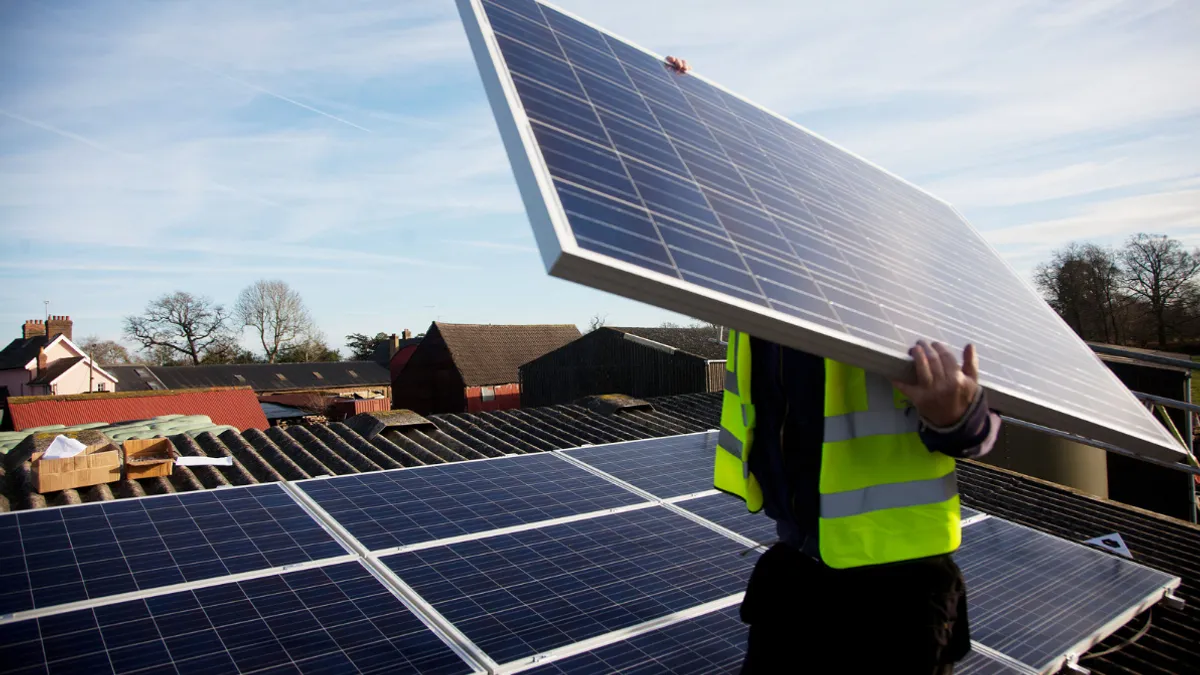Dive Brief:
- The California Public Utilities Commission (CPUC) has approved a $1 billion program that provides rebates to incentivize the installation of solar power on multifamily affordable housing residences, according to Solar Power World and others. The Solar on Multifamily Affordable Housing (SOMAH) program aims to outfit apartment buildings for about 150,000 low-income renters with solar, and it will provide $100 million in incentives annually for 10 years.
- Landlords will apply for the SOMAH incentives, which are available on buildings that include at least five subsidized units for low-income residents. The building must be located in a disadvantaged area or most of its renters must earn 60% of the area's typical income.
- Tenants are expected to see savings on utility bills, thanks to credits for electricity produced by the solar panels. The law requires 51% of the utility savings to go directly to tenants, and landlords cannot pass on any costs to tenants, such as by raising rents.
Dive Insight:
Although the program's backbone has been approved, much still has to be done before it gets up and running next year. A program administrator must be chosen by April 30, and the program handbook has to be finalized by August 30. If those aspects stay on track, the first panels should be installed mid-September.
California previously had a low-income resident solar incentives program but it received a lot of criticism and didn't lead to many solar installations. The state's renewable energy incentive programs in general have drawn criticism for their inequitable distribution of benefits. They're frequently viewed as California's poor paying more for the rich to install solar panels and receive electric vehicle benefits. This law fixes many of those issues and includes more benefits and protections for renters.
Tenant protections are key because often only landlords benefit from programs that promote adding renewable energy options to buildings. Sometimes owners might raise rents or devise other erroneous costs for tenants to offset any installation or operations costs. This law ensures that tenants receive the credits for their part of the solar output, and that building owners dedicate as much of the system as possible to tenants.
The program is designed not only to provide solar for disadvantaged residents, but namely those who are renters of multifamily housing. Incentive programs often are aimed at the owners of standalone houses because involving an owner and a renter complicates the benefits distribution. Bringing multiple renters into the mix complicates it further. But leaders saw a need to provide underserved multifamily rental communities with the same green energy options that other residents enjoy, especially considering how many low-income residences are located in more polluted areas than high-end homes.












